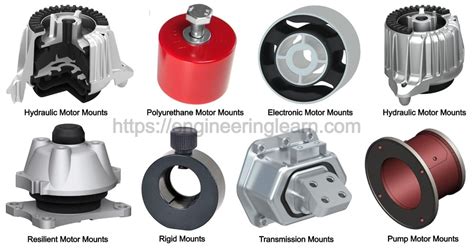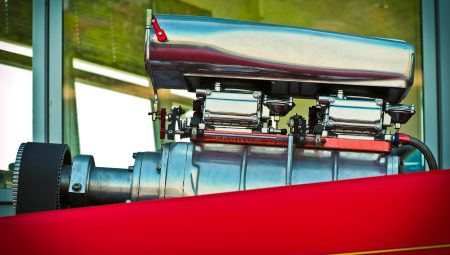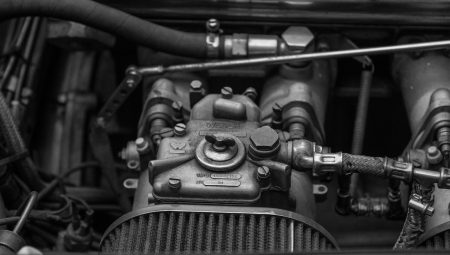Explore engineering mounts, their types, material selection, installation importance, and troubleshooting common issues to enhance your project’s performance and reliability.Engineering mounts play a crucial role in various mechanical systems, providing support and stability while absorbing vibrations and shocks. These mounts serve as the unsung heroes in the world of engineering, contributing to the performance and longevity of machinery and equipment. In this blog post, we’ll explore the essentials of engineering mounts—starting with what they are and the different types available, followed by guidance on properties and material selection that ensures optimal performance. We’ll emphasize the importance of proper installation and common issues one might encounter, along with troubleshooting tips. Whether you’re a seasoned engineer or just starting in the field, understanding engineering mounts is crucial for creating reliable and efficient systems. Let’s dive in and unravel the intricacies of these foundational components.
What Are Engineering Mounts?
Engineering mounts are essentially supporting structures designed to secure machinery and equipment while simultaneously minimizing vibration, shock, and noise. These mounts play a crucial role in enhancing the stability of machinery during operation, ensuring that equipment remains in place even under the variable forces generated during its use. Typically, engineering mounts are made up of a combination of rigid and flexible materials which provide the necessary damping and isolation, thereby protecting both the equipment and the environment in which it operates. They are used widely in various industries, including automotive, aerospace, and manufacturing, where the challenge of managing vibrations and maintaining alignment is particularly critical.
One of the primary functions of engineering mounts is to absorb vibrations generated by rotating machinery or oscillating parts, which can otherwise lead to premature wear and tear, as well as potential failures of the equipment. Additionally, these mounts can help to distribute weight evenly across the equipment or foundation, thereby reducing stress concentrations that might otherwise result in mechanical failures. Understanding the design, material properties, and application techniques of engineering mounts is essential for engineers and technicians alike, as selecting the wrong mount can lead to inefficiencies and increased maintenance costs.
In summary, engineering mounts are invaluable components in a myriad of applications, helping to create a more efficient, reliable, and noise-free environment for both machinery and personnel. The selection of appropriate mounts involves not only understanding the types available but also assessing factors like load capacities, environmental conditions, and specific vibration characteristics of the equipment being supported. Therefore, comprehending what engineering mounts are and their functionality is the first step toward optimizing your mechanical systems for optimal performance and durability.
Types of Engineering Mounts
When it comes to engineering mounts, it is essential to understand the various types available, as each serves unique functions and is tailored to specific applications. Primarily, engineering mounts can be classified into several categories, including but not limited to rigid mounts, elastic mounts, and pneumatic mounts, each possessing distinct characteristics that cater to different stabilization needs within machinery and equipment.
Rigid mounts are designed to offer strong support, designed for applications requiring minimal movement, and are ideal in environments where space constraints are paramount, as they deliver unparalleled rigidity and stability, making them a favored choice in many industrial settings. In contrast, elastic mounts provide a balance between support and flexibility, utilizing materials that allow a certain degree of vibration reduction, which enhances performance and prolongs the lifespan of equipment due to decreased wear and tear.
Additionally, pneumatic mounts employ air-filled components to absorb shocks and vibrations, functioning optimally in applications subjected to significant forces, and are particularly beneficial in environments where noise reduction is a priority, thus promoting a quieter operation. The choice of an appropriate mount type is crucial for achieving the desired performance characteristics, thereby ensuring the reliability and efficiency of engineering systems.
Properties and Material Selection
When it comes to engineering mounts, understanding the properties of various materials is crucial to ensuring optimal performance and longevity, as these mounts play a pivotal role in supporting equipment while isolating vibrations and shocks that could lead to premature failures or inefficiencies in machinery operations.
In selecting the appropriate material for engineering mounts, numerous factors must be taken into account, including the operating environment, thermal characteristics, and load-bearing capabilities, as well as factors such as chemical resistance and damping properties, which directly influence how effectively a mount can absorb energy and help prevent wear and tear on the connected components.
For example, materials such as rubber, urethane, and silicone are often chosen for their excellent vibration-dampening properties, while metals like aluminum and steel may be considered in applications requiring enhanced strength and durability, therefore making it essential to analyze specific requirements and select materials that align with the i
Importance of Proper Installation
When it comes to engineering mounts, the significance of proper installation cannot be overstated, as it directly affects not only the operational efficiency of the machinery but also the longevity and safety of the system as a whole; therefore, understanding the precise requirements for installation, including alignment, torque specifications, and the selection of appropriate tools, is essential to ensure that the mounts perform their function effectively.
Moreover, the installation process should be conducted according to the manufacturer’s guidelines, as these instructions often contain critical details that can prevent common pitfalls, such as improper load distribution, which can lead to an increase in vibration levels and, ultimately, premature failure of the component, further emphasizing the importance of adhering to industry standards to maintain reliability.
To facilitate a successful installation, it is advisable to follow a systematic approach that includes checking the surface conditions of the mounting points, ensuring they are clean and free of debris, utilizing torque wrenches to achieve the correct fastening tension, and conducting post-installation inspections to verify that all components are securely attached and functioning as intended, thus lea
Common Issues and Troubleshooting
When it comes to engineering mounts, it is essential to understand that, despite their critical role in ensuring proper alignment and vibration control in various machinery and equipment, they can encounter several common issues that significantly impact their performance, leading to increased wear and potential failure if not addressed in a timely manner.
One prevalent issue with engineering mounts is premature wear, which can often be attributed to factors such as improper installation, inadequate load distribution, and the utilization of subpar materials that fail to meet the stringent requirements needed for specific applications, while failing to regularly check for signs of fatigue and deformation can exacerbate these problems, ultimately resulting in costly downtime and repairs.
Another common challenge is misalignment, which can arise from a variety of factors including thermal expansion, settling of mounting surfaces, or even slight movements originating from adjacent machinery, creating potential stress points that can lead to failure if not monitored and corrected, thus highlighting the necessity for routine inspection, the implementation of proper alignment techniques, and the use of advanced diagnostic tools to mitigate these risks.
Frequently Asked Questions
What are engineering mounts?
Engineering mounts are specialized supports or components used in machinery and equipment to isolate vibrations, support loads, and maintain alignment.
What materials are commonly used for engineering mounts?
Common materials for engineering mounts include rubber, metal, and polymer composites, each providing different levels of strength and vibration damping.
How do engineering mounts improve equipment performance?
Engineering mounts improve equipment performance by reducing vibration transmission, minimizing noise, and protecting components from excessive wear and fatigue.
What factors should be considered when selecting engineering mounts?
Factors to consider when selecting engineering mounts include load capacity, frequency range, temperature resistance, and the environmental conditions in which they will operate.
Can engineering mounts be customized for specific applications?
Yes, engineering mounts can often be customized or designed to meet specific application requirements, ensuring optimal performance and compatibility.
What industries commonly use engineering mounts?
Engineering mounts are commonly used in various industries, including automotive, aerospace, manufacturing, and industrial machinery.
How do I know if my equipment needs new engineering mounts?
Signs that equipment may need new engineering mounts include excessive vibration, unusual noise, misalignment, and visible wear or damage to existing mounts.





